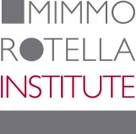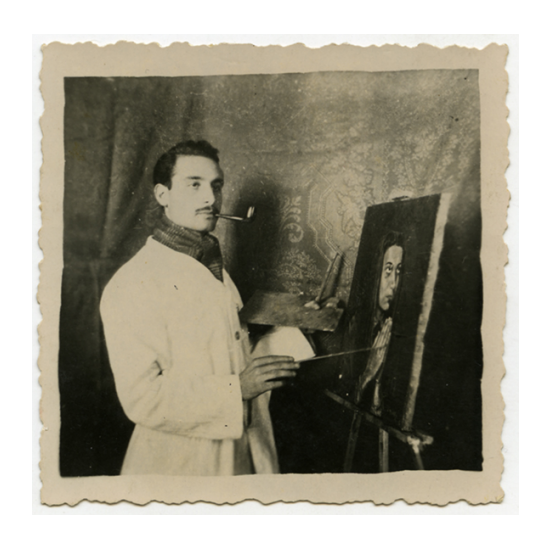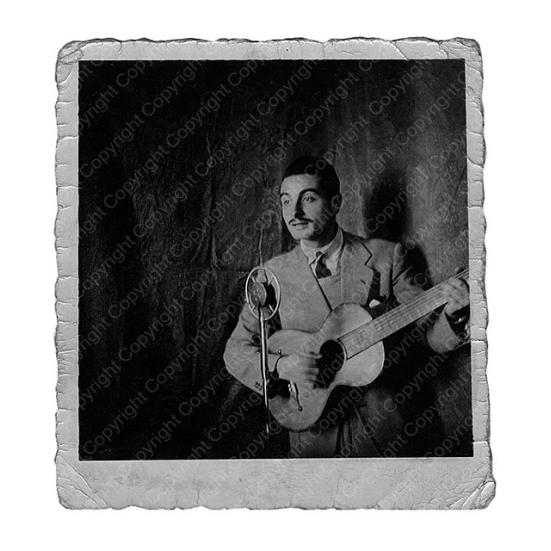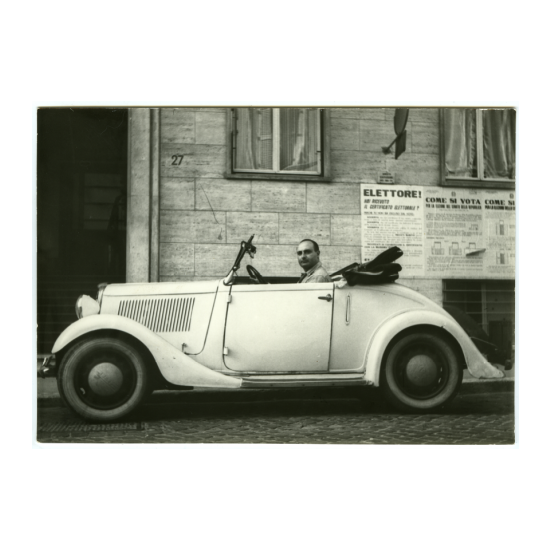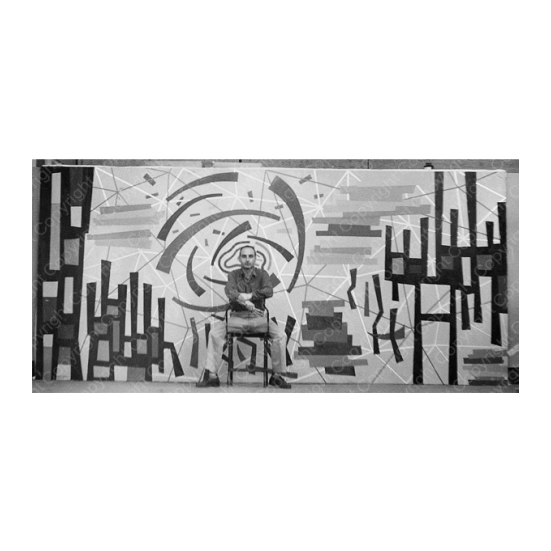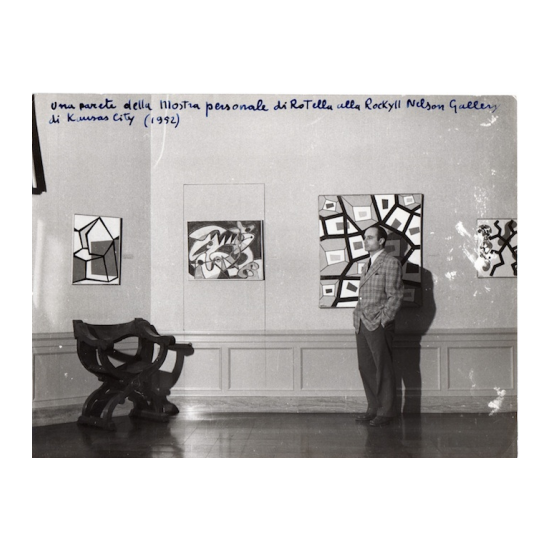Main menu:
THE ARTIST > CHRONOLOGY
Mimmo Rotella was born in Catanzaro on October 7, 1918. After getting a degree at the technical school in Catanzaro, up until 1940, he taught at the School of Agriculture in the city. The following year he was called into the Army by the Military District of Catanzaro and sent to the Caserta School for Non Commissioned Officers.
In September 1944 he moved to Naples, where he received his graduation diploma in Art. In 1945, he applied for work as a draftsman at the Ministry of Post Offices and Telecommunications and settled in Rome.
Here, Rotella visited galleries and museums, embarking on a journey of experimentation in a style still tied to traditional painting techniques. In those works one can recognize an earlier Cubist and Futurist influence, and later an influence closer to the geometric abstraction of Mondrian and Kandinsky. The lively cultural climate of the Capital was concentrated in those years on the debate between abstract and figurative art, the latter supporter from the Italian Communist Party (P.C.I.) chaired by Palmiro Togliatti in the name of Realism represented by Renato Guttuso. Instead, the abstract front was made up of a group of artists close to the Art Club, established in 1945. Also involved in the Art Club’s initiatives were Carla Accardi, Pietro Consagra, Piero Dorazio, Achille Perilli, Antonio Sanfilippo and Giulio Turcato, who, with Ugo Attardi and Mino Guerrini, were the founders of the single issue Forma. Mensile di Arti Figurative. The distinguishing features of the group, then called Forma 1, were its international nature, its reference to the avant-garde and its commitment against the populist “neo-romanticism”. Rotella became part of this debate through works revealing a tension that moves increasingly towards abstraction, but without that political and polemical quality that was typical of the work that Forma 1 championed.
In 1947, he participated in the first two exhibitions organized by the Art Club.
During the period in which he was painting, Rotella composed and recited fonetic poems he called “epistaltic” or “phonetic”. With these poems Rotella developed the “laceration” of words, as theorized in the Manifesto dell’Epistaltismo composed by the artist in 1949, where are strong the echoes of Futurism production, in particular that of Filippo Tommaso Marinetti.
In June 1950 he took part in the exhibition Réalités Nouvelles, held in Paris. In the following year he participated in the exhibition “Arte astratta e concreta in Italia – 1951”, organized at the Galleria Nazionale in Rome by Palma Bucarelli, Giulio Carlo Argan and Józef Jarema. In the same year, at the Galleria Chiurazzi in Rome, the artist’s first solo exhibition opened. The show has as wide success among the critics and the public.
In September 1951, Rotella travelled to the United States, thanks to a Fulbright scholarship, which provided him with a stable position for about one year at the University of Kansas City. During this stay, the artist worked on a solo exhibition at the Rockhill Nelson Gallery of Art in Kansas City, and painted a large wall panel with an astronomical theme for the rooms of the Department of Geology and Physics at the University. Following his stay in the United States, he landed in Naples in August of 1952 and, after a time on Ischia, returned to Rome, where he began working in a studio in Via San Giacomo, devoting himself almost exclusively to poetry and music.
